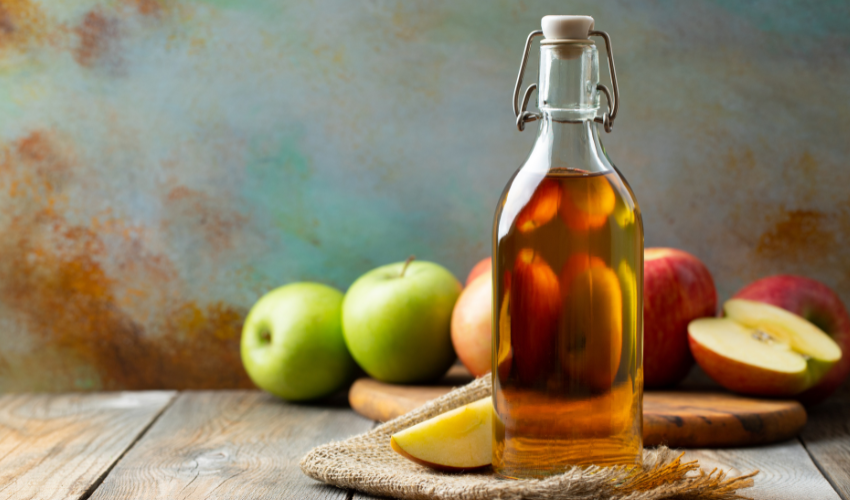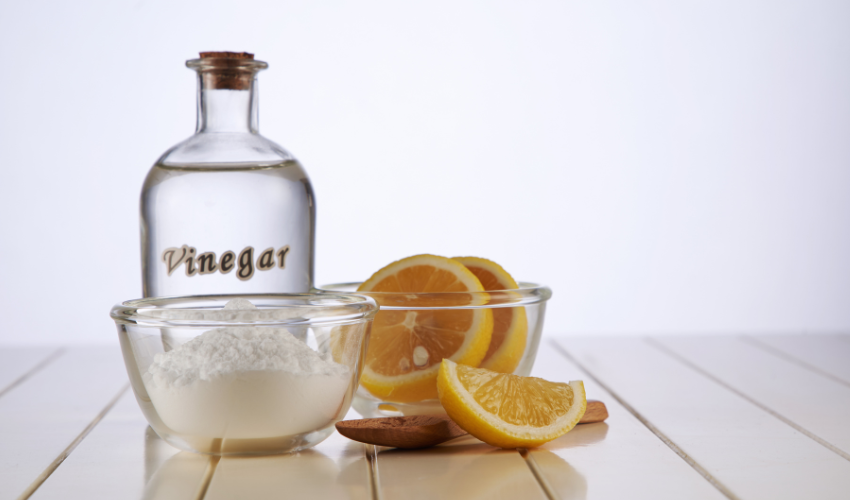Vinegar is a widely used condiment in cooking, cleaning, and even medicine. It is a sour liquid that enhances the flavor of many dishes and serves as a natural cleaning agent. However, many people are unaware of what vinegar is made from. In this article, we will explore the origin and production of vinegar or acetic acid to understand its composition and uses.
What is Vinegar Made From?
Vinegar is made from the fermentation of alcohol. When yeast ferments sugar in the presence of oxygen, it produces alcohol, which is then converted into acetic acid by bacteria. This process is known as acetous fermentation, and it is responsible for the sour taste and pungent aroma of acetic acid. The type of vinegar produced depends on the source of alcohol used and the process of fermentation.
Types of Vinegar:
- White Vinegar
White acetic acid is made from grain alcohol and has a clear color and sharp taste. It is commonly used in cooking, pickling, and cleaning. - Balsamic Vinegar
Balsamic acetic acid is made from grape juice and has a sweet and sour taste. It is often used as a salad dressing or drizzled over grilled vegetables or meat. - Red Wine Vinegar
Red wine acetic acid is made from red wine and has a tangy taste and deep color. It is commonly used in cooking and marinades. - Rice Vinegar
Rice acetic acid is made from fermented rice and has a mild and slightly sweet taste. It is commonly used in Asian cuisine. - Apple Cider Vinegar
Apple cider acetic acid is made from fermented apple juice and has a mild flavor and amber color. It is often used in dressings, marinades, and home remedies.

Production of Vinegar:
- The first step in production is the production of alcohol. This is achieved by fermenting a source of sugar, such as grapes, apples, grains, or rice.
- The alcohol is then exposed to oxygen and a type of bacteria called Acetobacter. The bacteria convert the alcohol into acetic acid through acetous fermentation.
- The acetic acid is then mixed with water to dilute the vinegar to the desired strength.
- The acetic acid may be pasteurized to kill any remaining bacteria and to stabilize the flavor and acidity.
FAQs:
Can vinegar be made at home?
Yes, acetic acid can be made at home by fermenting a source of sugar with yeast and then exposing it to oxygen and Acetobacter.
Is acetic acid gluten-free?
Yes, acetic acid is gluten-free as the gluten protein is removed during the fermentation process.
Can vinegar go bad?
Acetic acid has an indefinite shelf life but may lose some flavor and acidity over time.
Is vinegar safe for consumption?
Yes, v is safe for consumption in moderate amounts. However, excessive consumption may lead to stomach upset or tooth enamel erosion.
Can acetic acid be used as a natural cleaning agent?
Yes, acetic acid is a natural cleaning agent and can be used to clean windows, floors, and surfaces.

Conclusion
Acetic acid is a versatile ingredient with various types and uses. It is made from the fermentation of alcohol and acetic acid production by bacteria. Understanding the origin and production of acetic acid can help us appreciate its unique properties and incorporate it into our daily lives.
Whether it’s used in cooking, cleaning, or as a natural remedy, acetic acid is a household staple that has been around for centuries. Its origins can be traced back to ancient civilizations like the Babylonians, who used acetic acid as a preservative and medicine.
Today, vinegar is a widely used ingredient in many cuisines around the world, and its health benefits are well documented. Studies have shown that consuming acetic acid can help regulate blood sugar levels, reduce cholesterol, and aid in weight loss.
In addition to its health benefits, vinegar is also an effective natural cleaning agent that can help kill bacteria, mold, and mildew. When mixed with water and a few drops of essential oils, acetic acid can be used to clean floors, windows, and surfaces.
Vinegar is an incredibly versatile and useful ingredient that has been around for centuries. Whether you’re using it to cook, clean, or improve your health, understanding what acetic acid is made from and how it’s produced can help you appreciate its unique properties and benefits. So the next time you reach for a bottle of vinegar, remember the intricate process that went into making it and enjoy its many uses.






















